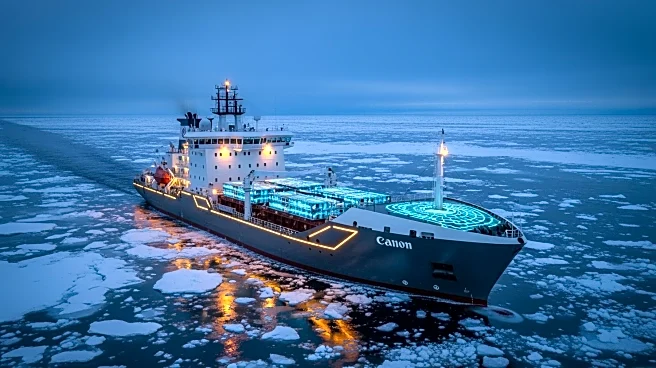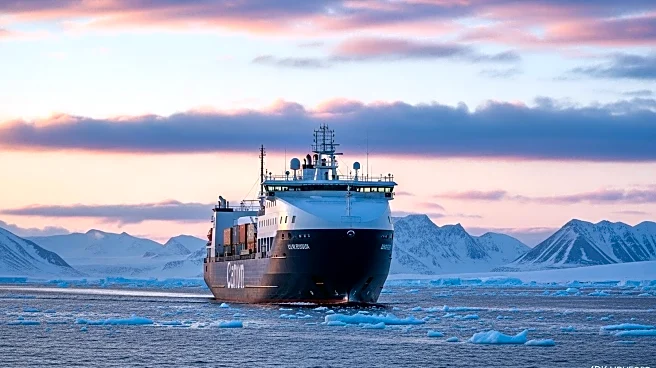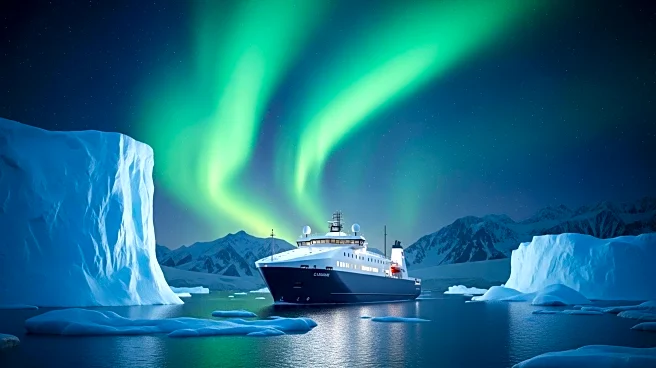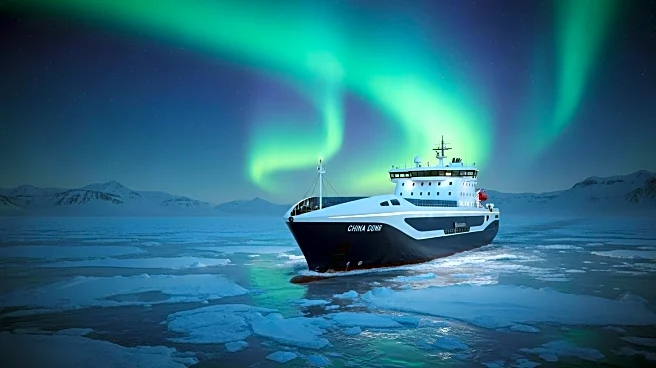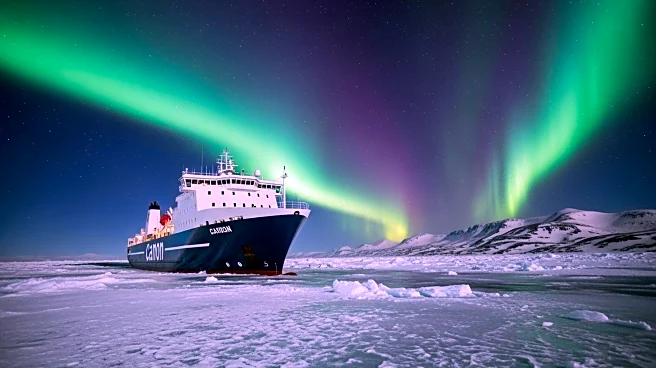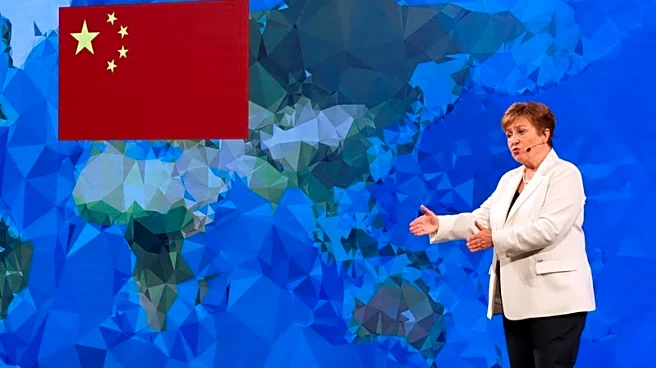What's Happening?
A Chinese container ship, the Istanbul Bridge, has completed a groundbreaking journey through the Arctic to a UK port, significantly reducing transit time for goods such as electric vehicles and solar
panels destined for Europe. The voyage, initially expected to take 18 days, was delayed by two days due to a storm off Norway but still arrived earlier than the typical 40 to 50 days required via the Suez Canal or Cape of Good Hope. This new Northern Sea Route, entirely within Arctic waters and Russia's exclusive economic zone, is now navigable due to global warming. China is seeking faster maritime links with the European Union amidst a costly trade war with the United States, aiming to diversify its export markets to sustain economic growth. Chinese customs data shows exports to Europe rose by 14% in September, while shipments to the U.S. fell by 27%.
Why It's Important?
The successful Arctic voyage represents a strategic shift in China's trade logistics, potentially altering global shipping routes and economic dynamics. By reducing reliance on traditional routes like the Suez Canal, China can mitigate risks associated with geopolitical tensions and trade disputes, particularly with the United States. This development could enhance China's trade relations with Europe, the world's third-largest economy, while diminishing its dependency on the U.S. market. The Arctic route's viability underscores the impact of climate change on global trade, offering new opportunities but also posing environmental and navigational challenges. Stakeholders in the shipping industry, European importers, and environmental groups will closely monitor these developments.
What's Next?
China's continued exploration of Arctic routes may lead to increased maritime cooperation with Russia, further solidifying their strategic partnership. As more ships navigate these waters, international regulations and environmental protections will become critical issues. European ports may need to adapt to accommodate increased traffic from Arctic routes, potentially boosting local economies. The U.S. may respond by reassessing its trade strategies and maritime policies to counterbalance China's growing influence in global shipping. The long-term sustainability of Arctic shipping will depend on technological advancements and international collaboration to address environmental concerns.
Beyond the Headlines
The opening of Arctic shipping routes highlights the complex interplay between climate change and global trade. While offering economic benefits, it raises ethical questions about exploiting fragile ecosystems and the responsibilities of nations to mitigate environmental impacts. The geopolitical implications of Arctic navigation could reshape alliances and influence global power dynamics, as countries vie for control over these emerging trade corridors. The development may also accelerate technological innovations in shipbuilding and navigation systems, as companies seek to capitalize on new opportunities while ensuring safety and environmental compliance.
